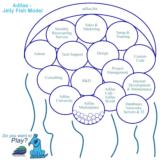|
Basic Assignments
|
Options & Settings
|
Main Time Information
|
||||||||||||||||||||||||||||
|
|
|
|
|
|||
|
|
|||
|
|
|
Uploaded Media/Content & Other Files
(1)
|
||||
| Media Name | File Type | Date | Description | |
| TeamCommentsSummary.docx | Doc/Text | 10/6/2020 | Finished summary for question 7. Brainstormed an octopus type model. Overall determined that we like the jellyfish idea/type model. | |
|
Notes:
|
|
Shannon and I were doing some research and summaries on the adilas jellyfish model. We also explored some options about using an octopus vs a jellyfish. This was a suggestion from Danny Shuford in some of his comments that we were summarizing. Here are some of our findings: Defining an octopus - multiple legs, it can squeeze, run, hide, change shape - expand, it can be very rigid, it is classically a predator. Normally when you think of an octopus you think of something much bigger - or potentially something that has much bigger parts and pieces. Some thoughts and images are potentially frightening and scary, especially when thinking of large octopuses (movie-level characteristics). They are also nimble and quick, not always the aggressors, flexible, able to camouflage, blend in, be hidden or subtle, or can be right out in front. We kept coming back to some preconceived notions and/or expectations. It has a central head or body and has arms or other appendages (options) - We could potentially explain those other options if needed. Maybe people hear jellyfish and feel like that is too passive but maybe they hear octopus and think too aggressive or potentially dangerous. Octopus may be harder to draw if trying to explain a business model or architecture or structure. Overall as we discussed it further, we determined that the jellyfish model seems to be a better fit. It conveys the idea we are trying to share. It isn’t as intense or intimidating. It is really just a teaching tool to help convey a concept. |



